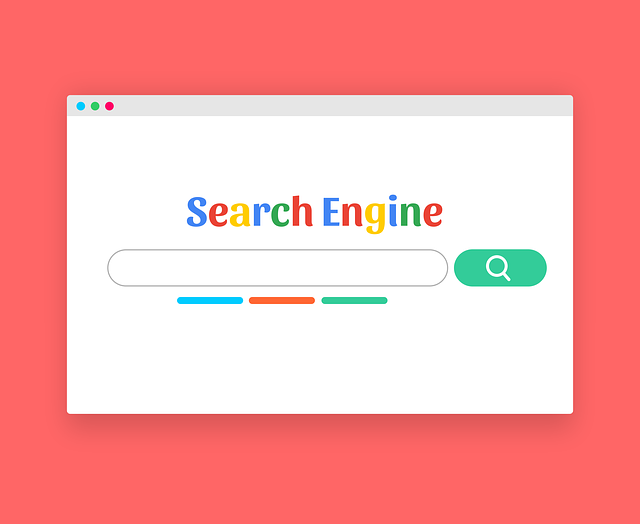The FAQ SEO Schema is a powerful tool for boosting website visibility and user engagement by helping search engines understand and display frequently asked questions directly on results pages (SERPs). It enhances FAQ Snippet Optimization, increases click-through rates, and captures valuable 'real estate' on the SERP. Correctly structured schema markup with Accordion Schema SEO allows search engines to identify and highlight question-answer pairs, optimizing visibility and user interaction. Implementing this schema can drive conversions, reduce bounce rates, and elevate a website's online presence, making it a game-changer for SEO performance. Website owners should track key engagement metrics like CTRs and conversion rates to assess success.
Adding the FAQPage schema to your website’s content is a strategic move to boost user engagement and search engine optimization (SEO). This markup enables search engines to understand your content better, resulting in rich FAQ snippets on SERPs. By implementing this schema, you provide users with direct access to frequently asked questions and answers, enhancing their online experience. The article explores the benefits, key elements, and strategies behind optimizing your content for enhanced visibility and improved user interaction through the FAQ SEO Schema.
- Understanding FAQ SEO Schema: Its Role and Benefits
- Why Add FAQPage Schema to Your Content?
- Key Elements of a Successful FAQPage Schema Implementation
- Enhancing User Experience with Rich FAQ Results
- Improving Search Engine Visibility: Optimizing for SERP Features
- Measuring Success: Tracking Engagement and Conversion Rates
Understanding FAQ SEO Schema: Its Role and Benefits

The FAQ SEO Schema is a powerful tool for website owners and content creators looking to boost their search engine visibility and user experience. This schema, specifically designed for Frequently Asked Questions (FAQs), plays a pivotal role in helping search engines understand the context and intent behind question-answer pairs on a webpage. By implementing this schema, you’re essentially providing structured data that signals to search engines that your content is informative and user-centric.
One of the key benefits lies in enhancing FAQ Snippet Optimization. When search engines crawl FAQ-rich pages with this schema, they can extract relevant information more efficiently, leading to improved snippet display in Search Engine Results Pages (SERPs). This means users are more likely to click through to your site as the presented answers become a compelling part of the search results. Additionally, the Schema FAQPage Type classification ensures search engines categorize and rank your content appropriately, increasing the chances of capturing valuable ‘real estate’ on the SERP for frequently searched queries.
Why Add FAQPage Schema to Your Content?

Adding the FAQPage schema to your website’s content is a strategic move that can significantly boost both user experience and search engine visibility. This schema allows search engines to understand your content better, especially when it comes to frequently asked questions. By implementing this structure, you provide valuable insights into what users want to know, making your site more engaging and relevant.
It enhances your search engine results page (SERP) real estate by encouraging rich snippet displays, which often include FAQ-like features directly in the search results. This can increase click-through rates as users are presented with concise, useful answers without having to visit your site. Furthermore, FAQPage schema facilitates what is known as Accordion Schema SEO, allowing for an optimized presentation of question and answer segments, thus improving overall user interaction and satisfaction.
Key Elements of a Successful FAQPage Schema Implementation

Implementing a successful FAQ SEO Schema requires strategic consideration of several key elements. Firstly, ensure your schema markup is structured correctly using the Accordion Schema SEO. This hierarchical structure allows search engines to understand the relationship between questions and answers, facilitating the display of rich FAQ snippets in search results.
Additionally, focus on FAQ Snippet Optimization by crafting clear, concise, and accurate question and answer pairs. Use relevant keywords naturally within these elements to enhance visibility. How to Add FAQ Schema guides users through the process, ensuring your schema is properly integrated into your content. This not only improves user engagement by providing quick access to answers but also increases your website’s SERP real estate, making your content more prominent and attractive to potential visitors.
Enhancing User Experience with Rich FAQ Results

When search engines like Google display rich FAQ results, users benefit from a more interactive and efficient experience. These enhanced snippets provide direct answers to frequently asked questions, making it easier for people to find what they’re looking for without clicking through to individual web pages. By incorporating the FAQ SEO Schema into your content, you enable search engines to understand that your page is rich in frequently asked questions and their corresponding answers. This leads to improved FAQ Snippet Optimization, where your website’s snippets become more informative and visually appealing, boosting user engagement.
Adding the FAQ schema isn’t just about improving how your content appears in search results; it’s also a strategic move to capture a larger portion of the user’s attention on Search Engine Results Pages (SERPs). With rich FAQ results, users are more likely to interact with your website directly from the search results, driving higher click-through rates and potentially reducing bounce rates. Thus, How to Add FAQ Schema effectively is a game-changer in enhancing user experience and optimizing your site’s visibility.
Improving Search Engine Visibility: Optimizing for SERP Features

Adding the FAQPage schema to your website’s content is a powerful strategy to enhance search engine visibility and optimize for rich FAQ results on SERPs (Search Engine Results Pages). This schema allows search engines to understand that your page provides frequently asked questions and their answers, making it more likely to be featured in enhanced search results. By implementing the FAQPage schema, you can improve your website’s visibility and capture the attention of users scrolling through search results.
When you integrate FAQSchema into your content, you unlock several benefits. It encourages search engines to display your content in a structured format using accordions or expanded sections, making it easier for users to navigate and find the answers they seek. Additionally, FAQ Schema optimization ensures that your website captures valuable real estate on SERPs, increasing the chances of user engagement and potential conversions. Implementing How to Add FAQ Schema effectively can be a game-changer in enhancing your site’s SEO and providing a better user experience.
Measuring Success: Tracking Engagement and Conversion Rates

To measure the success of implementing a FAQPage schema, website owners should track key engagement and conversion metrics. By integrating this schema, you’re optimizing for Rich FAQ Results, which can significantly enhance user experience by presenting frequently asked questions in an interactive and visually appealing accordion format. This improves scrollability and makes navigating through content easier.
Monitoring click-through rates (CTRs) on FAQ entries allows you to gauge how often users are engaging with your content. Higher CTRs indicate that the presented information is relevant and valuable. Additionally, tracking conversion rates, especially for e-commerce sites, can reveal if FAQ pages are effectively guiding users towards desired actions, whether it’s making a purchase or completing a form. Using tools like Google Analytics to analyze these metrics provides insights into the effectiveness of your Schema FAQPage implementation.
